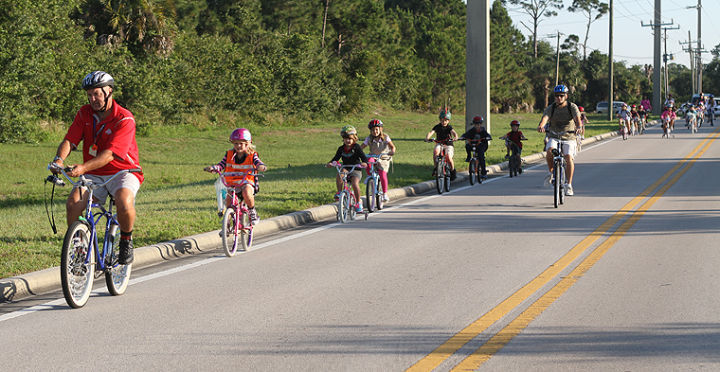
INDIAN RIVER COUNTY — Melbourne orthopedic surgeon Dr. Robert Cooper seemingly followed all the rules of the road when he took his bicycle out on an early morning ride along A-1-A earlier this month. But even still, he was struck by a passing motorist and airlifted to an area hospital.
The collision once again raised concerns by cyclists and motorists alike – how to share the road and minimize the risk.
Dr. Cooper, 54, was riding with the flow of traffic, on the outside edge of southbound A-1-A. His bicycle had safety lighting and he was wearing a helmet.
The motorist, identified as 27-year-old Sean Douglas Berger, was cited for “improper passing, ” according to the Florida Highway Patrol.
The agency said Berger did not provide enough space for Dr. Cooper while Berger attempted to pass. Instead, Berger’s Chrysler Town and Country struck the rear of the doctor’s bicycle, which ejected Dr. Cooper farther south and west, incapacitating him.
The bicycle, according to the Florida Highway Patrol, got caught under the van’s front bumper.
“It’s time to educate the public,” Indian River County Sheriff’s Deputy Roberta Barker said of bicycle-vehicle safety and rules of the road.
Dep. Barker recently underwent special training regarding the topic and is planning various “bike rodeos” throughout Indian River County to educate not only children, but also adults on how to share the road safely.
“I, myself, am sick and tired” of vehicle-bicycle crashes, the deputy said.
Not laying blame on any particular side, Dep. Barker said, “I think it’s all of our faults” – motorists and cyclists, alike.
“They have the same rules as the motorists,” the deputy said of cyclists, though many fail to observe those rules.
Cyclists are to use hand signals to indicate turns. They are to travel in the same direction as the flow of traffic. They are to follow all the same street signs and traffic signals, too.
By the same token, motorists are to be aware of their surroundings, keeping an eye out for cyclists on the road – or sidewalk, as the case may be. When pulling onto a road or making a turn, motorists are to look left, right, and left again before engaging, making sure the road is clear.
Motorists are also encouraged to slow down and move over as is safe when passing a bicyclist, Dep. Barker said.
Cyclists under the age of 16 are required to wear a helmet. Those 16 and older and strongly advises to do so, the deputy said. All cyclists, regardless of age, are encouraged to wear reflective clothing daytime and night.
Bicycles are to have a headlight that has a 500-foot beam. It should have a taillight, too, that spans 600 feet.
“These are things people don’t do,” Dep. Barker said.
State law recently changed making it legal once again to ride bicycles on sidewalks, provided the cyclist is courteous to pedestrians, she said.
The law used to prohibit bicycles on sidewalks and such paths, Dep. Barker said, because it was thought bicycles were safer on the road, where motorists could better see them.
Indian River County has no easy way to track the number of vehicle-bicycle crashes, according to Sheriff’s spokesman Sgt. Eric Flowers. Bicycle-involved collisions are logged as traffic crashes like all other such incidents. The department does not have a way to query the database to pull statistics for bike-related crashes.
Even though the Sheriff’s Office doesn’t have hard numbers on bike-related collisions, Dep. Barker said she believes the number has increased over last year and continues to get worse over time.
According to numbers provided by the National Highway Traffic Safety Administration, nationally, the average person to be struck and severely injured or killed on a bicycle is a 39-year-old man, Dep. Barker said.
She explained that adult men tend to ride farther distances and are on the road for longer periods of time than most any other cyclist. Children, by comparison, tend to be on the road for shorter periods and typically stick to their neighborhood.
The Indian River County Sheriff’s Office is working on a series of public service announcements that will be aired on TV and in the media, reinforcing the importance of road safety. As part of the campaign, deputies on road patrol will be issuing warnings – and later, tickets – for failing to comply.
“We’re going to be out there,” Dep. Barker said.



